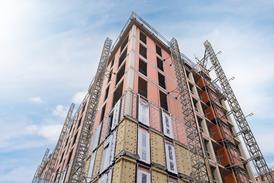The North-South divide on property prices has narrowed over the past few years. But is it about to start widening again?
At the turn of the millennium, we all seemed to be talking about the disparity in property prices between the northern parts of the country and the South. This "North-South divide" has been a much reported phenomenon, not just in recent years but at certain points in every house price cycle, including the 1980s. Journalists and other housing market pundits often described vast, unbridgeable gulfs in affordability and warned of dire economic consequences.
What, then, has happened to this chasm in the past couple of years? Why haven't we heard anything about "the North-South house price divide" lately?
The answer seems to be because it no longer exists - or, at least, is much less noticeable than it used to be. House prices in the North have been quietly booming while southern homeowners have had to tolerate the relatively lacklustre performance of their flats and houses. The North-South divide has, if not disappeared, then at least shrunk to much less noticeable levels. This leaves housing markets in a curious state of relative regional equilibrium, with northern house prices less than 10% cheaper than the average UK price compared to their 25% discount of five years ago.
There are still swathes of northern regions that remain prone to the consequences of industrial decline, with low house price levels and relatively high levels of affordability - because few people want to live in them. But in their midst are islands of prosperity. The spread of financial and business services and other service industries across Britain has come hand-in-hand with regeneration and renewal.
Other economic changes mean that there are now parts of northern regions with housing markets that behave much more like those in the South. Whole areas, such as the commuter belt south of Manchester, for example, have taken on characteristics - and prices - much more akin to their southern counterparts in the Home Counties.
Housing market divides are no longer as crude as between the north and south of the country. Some mainstream property values in north Kent are closer to those of modest Midland towns than the rest of the South-east, whereas prime properties in and around York, Harrogate, Leeds, parts of Newcastle, Manchester and Cheshire compare to London commuter belt. Migration from London into northern regions is slowing as the price advantage disappears. At the same time, migration from Rochdale to Leeds is, in economic terms, becoming much more difficult.
As 2005 ended, so too did the rate of house price growth in northern regions. Some regions even turned negative for a short while. As 2006 progresses, these regions seem to have bounced back into positive growth but at a much slower rate than in 2004 and 2005.
This means that London and the South-east are likely to see higher rates of growth once more and the gap between the South and much (but not all) of the North is set to start widening again. Some people may be looking to move South at the prospect of cooler price growth in the North. With prime London and southern markets showing signs of renewed vigour, now may present the best chance they have of doing so for a while.
Downloads
The move north
Other, Size 0 kbUK average house price change
Other, Size 0 kb
Source
RegenerateLive
Postscript
Yolanda Barnes is director of Savills Research
























No comments yet